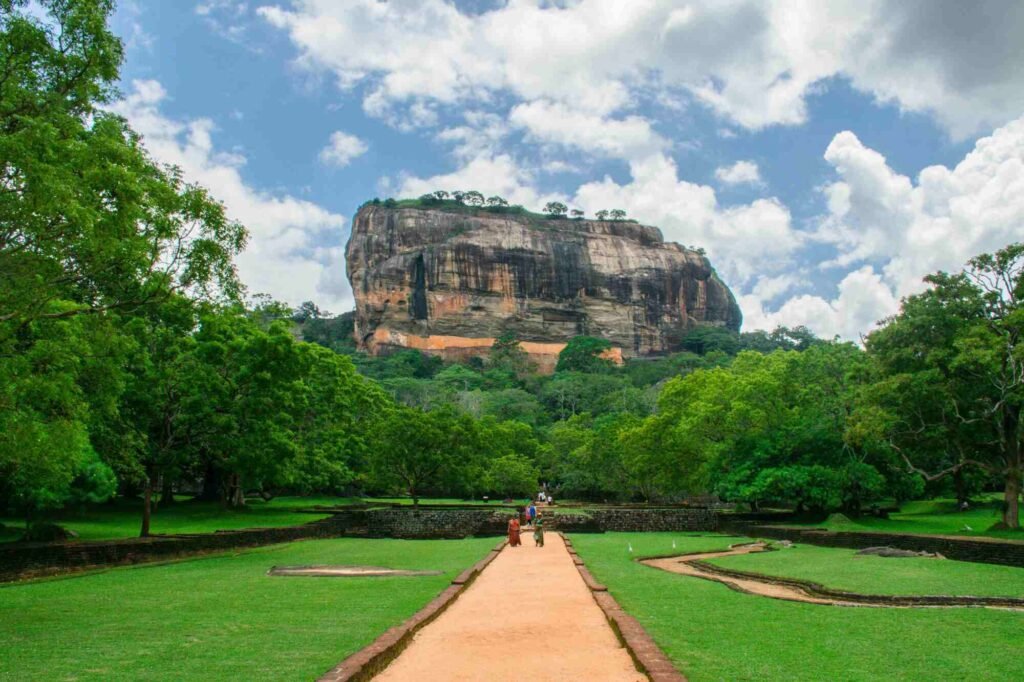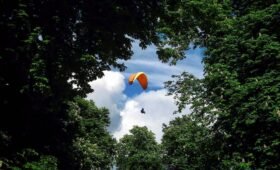Nestled in the heart of Sri Lanka, Sigiriya stands as a testament to the island’s rich historical tapestry and architectural brilliance. Often hailed as the “Eighth Wonder of the World,” this ancient rock fortress, perched 200 meters above the surrounding plains, offers a mesmerizing glimpse into Sri Lanka’s royal past. Its towering presence, surrounded by lush greenery and intricate gardens, makes Sigiriya one of the most iconic and awe-inspiring landmarks in the country.

A Glimpse into Sigiriya’s Regal Past
Sigiriya’s story is steeped in history, intrigue, and legend. Its origins date back over 1,500 years, with its most famous chapter beginning in the 5th century AD. King Kashyapa, seeking to establish an impregnable stronghold, chose the massive rock as the site for his new capital. Transforming Sigiriya into a majestic palace and fortress, he adorned it with luxurious gardens, elaborate frescoes, and a complex network of fortifications. However, following the king’s demise, the fortress gradually fell into ruin, eventually becoming a Buddhist monastery before being abandoned.
Architectural Marvels of Sigiriya
What makes Sigiriya truly remarkable is its advanced engineering and architectural design. As you approach the fortress, the first sight that captivates visitors is the impressive Water Gardens at the rock’s base. These gardens, with their geometric precision, feature pools, fountains, and moats that once flowed with water through an intricate hydraulic system. Even today, during the rainy season, the ancient fountains still function, showcasing the ingenuity of Sigiriya’s designers.
Midway up the rock, you’ll encounter the Mirror Wall – a smooth, polished stone surface that was once so reflective the king could admire his appearance as he walked by. Today, it serves as a historical canvas, bearing inscriptions and poems from ancient visitors, offering a glimpse into the past. Further along the ascent, visitors are greeted by the breathtaking frescoes of the Sigiriya Damsels, vivid depictions of celestial maidens that have withstood the test of time, adding to the site’s mystique.
The Summit: A View Fit for a King
Reaching the summit of Sigiriya is an exhilarating experience. After navigating through the giant lion’s paws – the remnants of the colossal lion structure that gave Sigiriya its name, “Lion Rock” – you emerge onto the expansive palace complex. Here, the ruins of King Kashyapa’s palace, throne, and the remains of a grand pool evoke images of a bygone era of splendor and luxury. The panoramic views from the top are nothing short of breathtaking, offering a sweeping vista of the surrounding forests, gardens, and distant mountains.
Why Sigiriya is a Must-Visit
Sigiriya is not just an archaeological wonder; it’s a journey through time. The combination of its rich history, stunning architecture, and natural beauty make it a must-visit destination for travelers seeking to immerse themselves in Sri Lanka’s cultural heritage. Whether you’re an adventure enthusiast eager to climb its heights, a history buff fascinated by ancient civilizations, or a nature lover drawn to its serene surroundings, Sigiriya promises an unforgettable experience.
Tips for Visiting Sigiriya
This is my average total monthly spending from one year living in Seattle’s Capitol Hill, one year living in San Francisco’s Upper Haight, one year traveling to 20 countries, and one month at a hotel in Bali. It is much cheaper for me to travel. Since the majority of my costs are from trains and flights, it’s significantly cheaper if I stay in one place.
Best Time to Visit: Early morning or late afternoon to avoid the midday heat and enjoy a cooler, more pleasant climb.
Wear Comfortable Shoes: The climb involves several steep steps, so comfortable footwear is essential.
Stay Hydrated: Carry water, especially on hot days, as the ascent can be demanding.
Explore the Gardens: Don’t miss the Water and Boulder Gardens at the base, which are as much a part of Sigiriya’s allure as the fortress itself.




